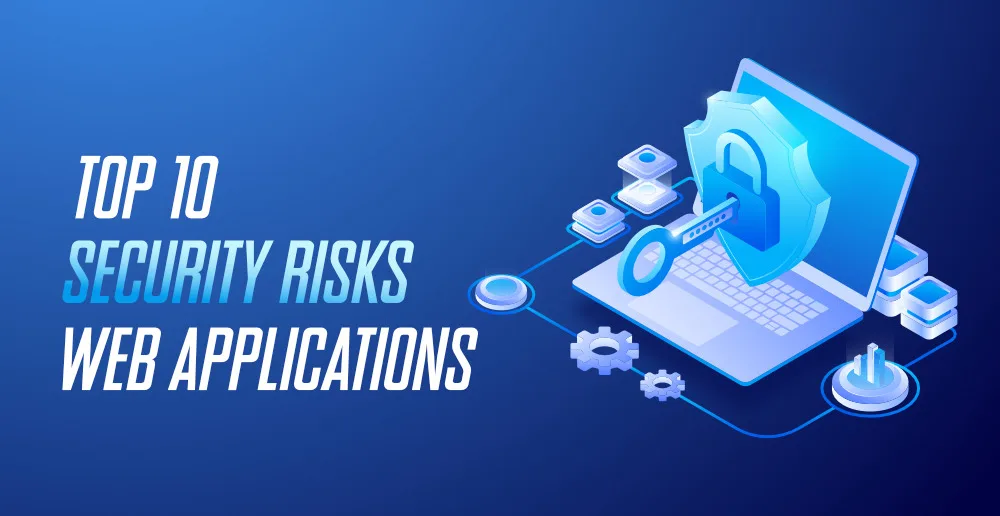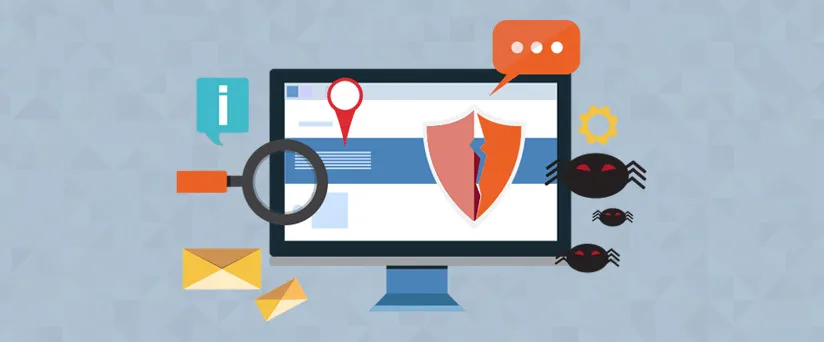In 2025, web application security has become more complex than ever. AI tools are speeding up code production, APIs are powering nearly every digital interaction, and organizations are facing mounting pressure to safeguard sprawling, interconnected application ecosystems. The result? Rapid development cycles, growing attack surfaces, and overextended security teams trying to keep up.
This article examines ten critical web application security risks identified in the OWASP Top 10 for 2025, how they impact businesses, where applications are most vulnerable, and the strategies to mitigate them in today’s fast‑moving digital landscape.
10 Web Application Security Risks for 2025

1. Broken Access Control
Risk Level: Critical
Broken access control happens when an application fails to restrict user permissions properly, allowing attackers to gain unauthorized access to sensitive data or functionality. In today’s API‑driven environments, these attacks extend beyond simple URL manipulation to exploit microservices authentication, JWT token misuse, and API endpoint weaknesses.
Cross‑Site Request Forgery (CSRF) is another common variant, where attackers trick applications into performing unintended user actions.
Mitigation Strategies:
- Enforce strict access controls with zero‑trust principles
- Use secure API authentication (OAuth 2.0, OpenID Connect)
- Apply the principle of least privilege for all accounts
- Replace predictable IDs with GUIDs
- Deploy runtime API security monitoring to flag unusual access patterns
2. Cryptographic Failures (formerly Sensitive Data Exposure)
Risk Level: High
Cryptographic failures occur when sensitive data and encryption keys are not handled properly—such as storing keys in plain text, using outdated algorithms, or neglecting proper protection for data in transit. In 2025, with tighter data protection laws and more advanced attack methods, weak cryptography can have devastating consequences for businesses.
Mitigation Strategies:
- Encrypt data with modern algorithms like AES‑256 or RSA‑4096
- Use hardware security modules and rotate keys regularly
- Enforce HTTPS with strong certificate management and pinning
- Minimize data retention; only store sensitive data when necessary
- Conduct regular audits to keep encryption standards up to date
3. Injection (SQL, NoSQL, XSS, and AI Prompt Injection)
Risk Level: Critical
Injection attacks happen when malicious input is processed as code. While SQL injection is still a top threat, 2025 has introduced new attack vectors including NoSQL databases, AI model prompts, and containerized applications.
Common Types:
- SQL Injection: Manipulating database queries to gain unauthorized access or delete/alter data
- Cross‑Site Scripting (XSS): Injecting malicious scripts into webpages to hijack sessions, deface sites, or redirect users
- NoSQL Injection: Similar attacks targeting non‑SQL databases
- AI Prompt Injection: Crafting malicious inputs to manipulate machine learning models or extract sensitive outputs
Example: A SQL injection attack could allow an attacker to run commands like DROP DATABASE, erasing critical data. AI prompt injections may trick an ML system into leaking confidential information or producing harmful outputs.
Mitigation Strategies:
- Validate all user inputs with allowlists rather than blocklists
- Apply output encoding (e.g., converting < and > into safe HTML entities)
- Use prepared statements, parameterized queries, or stored procedures
- Sanitize inputs for AI/ML models and implement prompt validation
- Follow secure coding guidelines built into modern frameworks and languages
4. Insecure Design
Risk Level: High
Insecure design highlights fundamental flaws in application architecture and design patterns. In today’s accelerated development cycles, rushed architectural decisions often introduce weaknesses that cannot be fixed later with simple implementation changes. Unlike security misconfigurations, this category focuses on systemic design issues rather than technical setup mistakes.
Common Issues: insufficient threat modeling, overly permissive API structures, and weak validation of business logic.
Mitigation Strategies:
- Incorporate threat modeling early in the design phase
- Follow security‑by‑design principles and proven secure design patterns
- Conduct regular architecture reviews using established frameworks
- Apply least privilege principles to all design decisions
- Standardize secure design guidelines and enforce review processes
5. Security Misconfiguration
Risk Level: High
Security misconfiguration happens when systems are not properly secured, maintained, or monitored. In 2025, the complexity of cloud services, container orchestration, and large‑scale integrations has made misconfigurations a widespread threat.
Typical Examples: exposed cloud storage, default credentials left active, overly permissive Cross‑Origin Resource Sharing (CORS) policies, and unnecessary services enabled in production environments.
Mitigation Strategies:
- Use infrastructure‑as‑code with predefined security baselines
- Perform frequent security audits and automated configuration scans
- Leverage configuration management tools with integrated security controls
- Configure CORS properly for API endpoints
- Adopt hardening guides and enforce secure configuration standards
6. Vulnerable and Outdated Components
Risk Level: High
Formerly known as “Using Components with Known Vulnerabilities,” this risk involves using outdated libraries, frameworks, or dependencies with security flaws. With AI speeding up code reuse and increasing dependency chains in 2025, the risk has escalated. Supply chain attacks targeting widely used libraries make this category especially dangerous.
Mitigation Strategies:
- Maintain a Software Bill of Materials (SBOM) to track dependencies
- Use security scanners and automated tools like Dependabot to detect vulnerabilities
- Integrate automated dependency scanning into CI/CD pipelines
- Apply timely patches and conduct regular security assessments
- Consider private package repositories for critical dependencies
7. Identification and Authentication Failures
Risk Level: High
This category covers weaknesses in authentication mechanisms, where attackers exploit flaws to steal credentials, hijack sessions, or impersonate users. In 2025, common tactics include credential stuffing, password spraying, and advanced session hijacking.
Mitigation Strategies:
- Enforce multi‑factor authentication across critical systems
- Use secure session management with proper timeouts and token handling
- Apply rate limiting and lockout policies to stop brute force attempts
- Monitor authentication activity for anomalies and use adaptive authentication
- Enforce strong password policies or adopt passwordless authentication methods
8. Software and Data Integrity Failures
Risk Level: Medium‑High
This category addresses attacks targeting software supply chains, unauthorized code changes, and compromised CI/CD pipelines. Unlike traditional malware, these breaches often exploit legitimate update or deployment processes.
Examples: malicious code injections during builds, tampered software updates, or unauthorized production modifications.
Mitigation Strategies:
- Implement code signing and verification for all software releases
- Secure CI/CD pipelines with strict access controls and continuous monitoring
- Adopt immutable infrastructure and automated deployments when possible
- Monitor codebases for unauthorized changes and maintain full audit logs
- Use software composition analysis (SCA) and integrity validation tools
9. Security Logging and Monitoring Failures
Risk Level: Medium
Security logging and monitoring failures occur when organizations lack effective systems to detect, alert, and respond to threats. Without proper visibility, attackers can remain undetected for long periods, leading to data theft, operational disruption, or financial loss. Another critical risk arises when sensitive data, such as passwords or payment card numbers, is accidentally logged, giving attackers easy access if logs are compromised.
Mitigation Strategies:
- Enable detailed logging across all application and infrastructure layers
- Use log analysis platforms and SIEM (Security Information and Event Management) tools for automated threat detection
- Configure real‑time alerting systems to flag suspicious activity immediately
- Mask or exclude sensitive data from logs to prevent leakage
- Establish baseline behavioral patterns to improve anomaly detection
10. Server-Side Request Forgery (SSRF)
Risk Level: Medium
Server‑Side Request Forgery (SSRF) attacks manipulate applications into sending unintended requests to internal systems. In cloud‑based infrastructures, SSRF poses heightened risks by potentially exposing metadata services, internal APIs, or private network resources. Attackers may use SSRF for reconnaissance, scanning internal ports, bypassing firewalls, or escalating attacks deeper into the environment.
Mitigation Strategies:
- Validate and sanitize all user‑provided URLs and inputs that trigger server‑side requests
- Use allowlists for outbound requests while blocking access to internal networks
- Implement strict network segmentation and firewall rules to minimize exposure
- Monitor outbound traffic patterns for unusual or unauthorized connections
- Enforce least privilege principles on any server components that handle external requests


